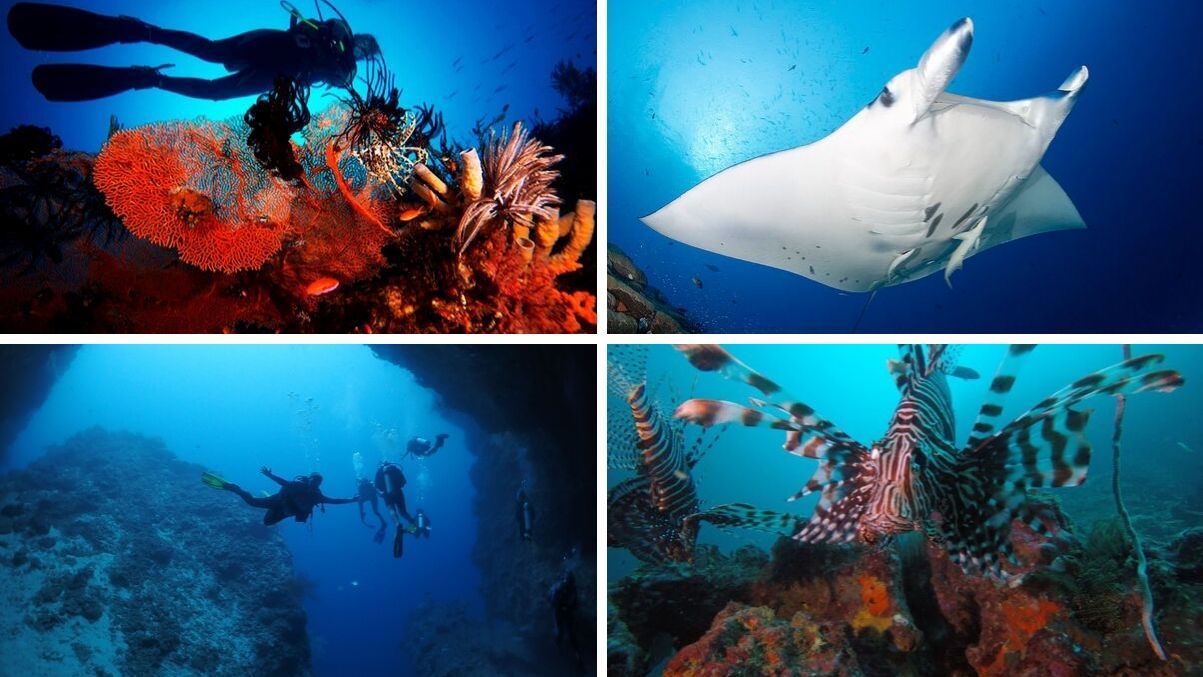Asia is the adventure playground of scuba diving. Whether navigating the extraordinary wreck dives of Vanuatu and the Solomon Islands, exploring the kaleidoscope reefs of Indonesia and the Philippines, or scouting the big fish wonders of Malaysian Borneo, Myanmar and Palau, there is something for everyone.
For those just starting to dip their toes in the water, there are plenty of beginner diving spots where you can see the ocean’s riches, but for seasoned divers there’s a whole new world to explore. In no particular order, here are some of the best dive sites that Asia has to offer.
Blue Corner, Palau
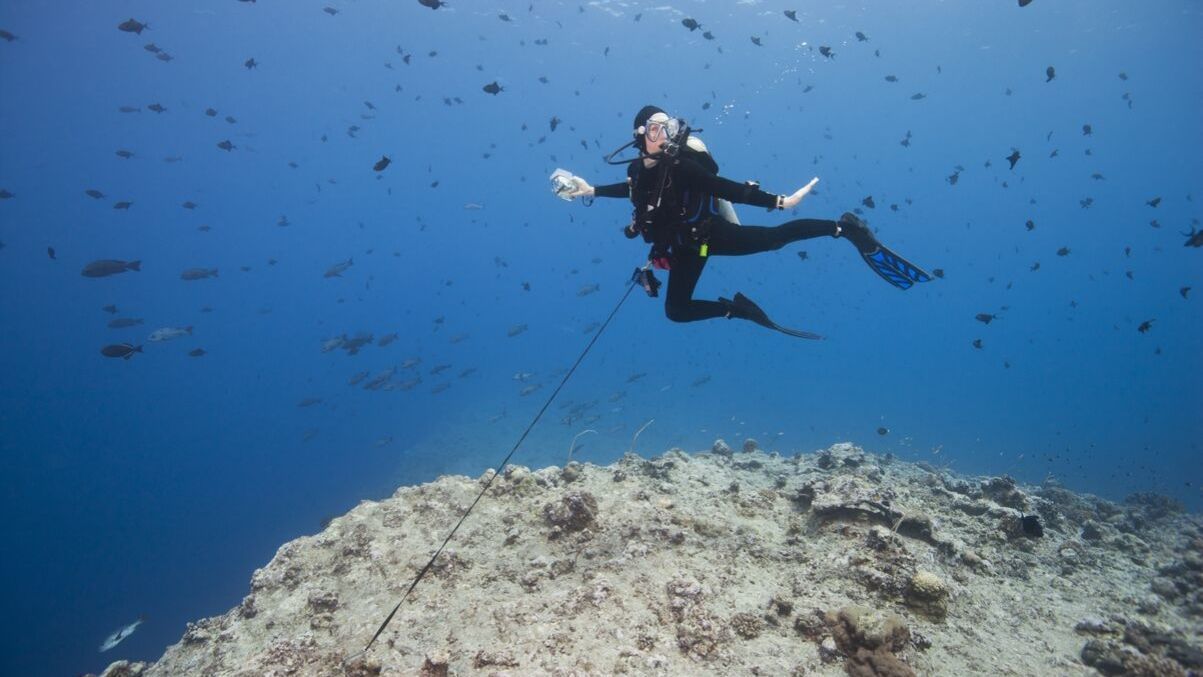
Hands down one of the best dive sites on the planet, this spot requires determination, skill, and an element of fearlessness. Strong currents from the open ocean mean divers need to use a specially-designed reef hook, which anchors to the reef – helping conserve air but also preventing any damage to the coral. Here you can see barracudas, snappers, tuna, groupers, eagle rays and hawksbill turtles, as well as manta rays and whale sharks. A little further north is the incredible Blue Hole, where four openings allow dropdowns into a cathedral-like dome. Both are awe-inspiring and humbling.
Where to stay: Fish’n’Fins, set up by world-renowned divers Tova and Navot Bornovski, is a Palau heavyweight and offers excellent liveaboards to explore the further reaches of this island chain. The Ocean Hunter has deluxe and standard cabins, a great entertainment area, plus is set up for professional photography and filming
Who to dive with: Fish’n’Fins day trips are also excellent. Their guides are knowledgeable, equipment is excellent
Sipadan Island, Malaysia
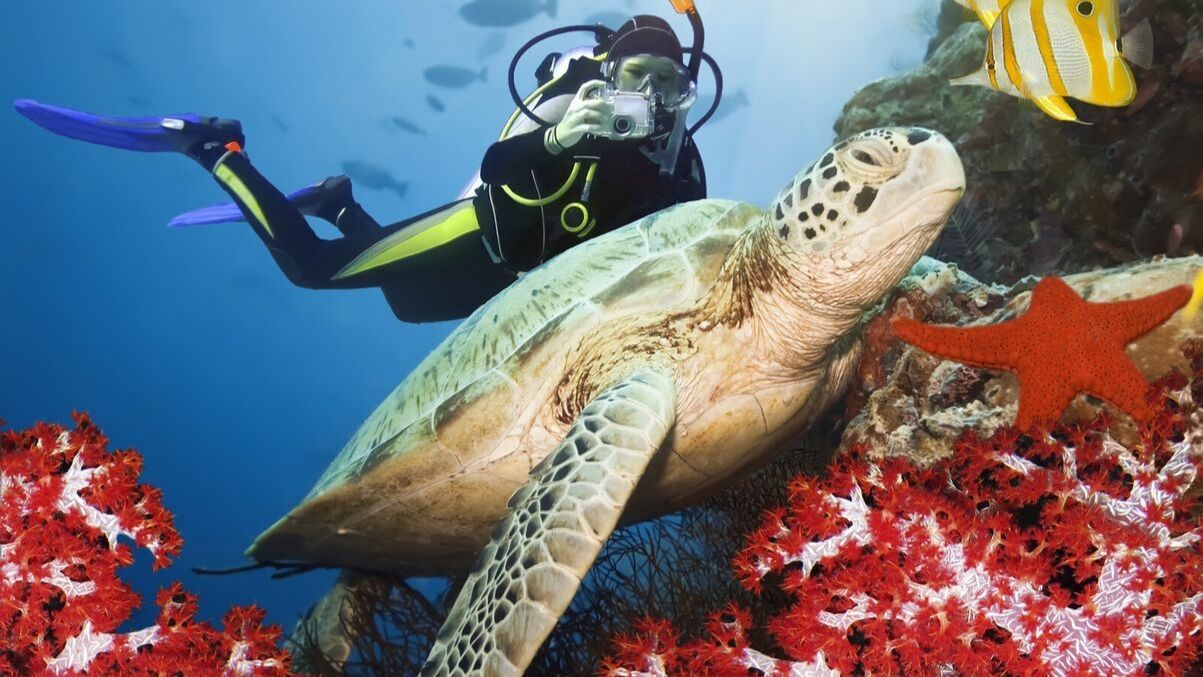
Sitting off the coast of Sabah in Malaysian Borneo, Sipidan Island regularly tops diving wishlists. Made up mainly of coral that has grown on top of an extinct undersea volcano it is surrounded by canyons, some hundreds of metres deep. This all makes it a wonderful playground where jackfish, green turtles, and sharks roam unfettered. Here divers can experience nature at its most remarkable – swimming alongside a whirl of barracudas, catching a glimpse of the rare scalloped hammerhead shark, or delving into a turtle graveyard. The dives are tough, currents are strong, and while there’s an array of sites to choose from – they are best suited to experienced and advanced divers. Sipadan is great year-round, but the best months to visit are from April to December.
Where to stay: There are no longer lodging options on Sipadan, so most divers tend to stay on nearby Mabul Island. One of the most popular choices is Scuba Junkie’s Mabul Beach Resort, which has everything you need at reasonable prices.
Who to dive with: Scuba Junkie’s dive shop is the go-to for seasoned divers as they are industry veterans and offer a range of excursions and activities. They have a five star PADI rating and are friendly and safety conscious.
Tubbataha Reef National Marine Park, Philippines
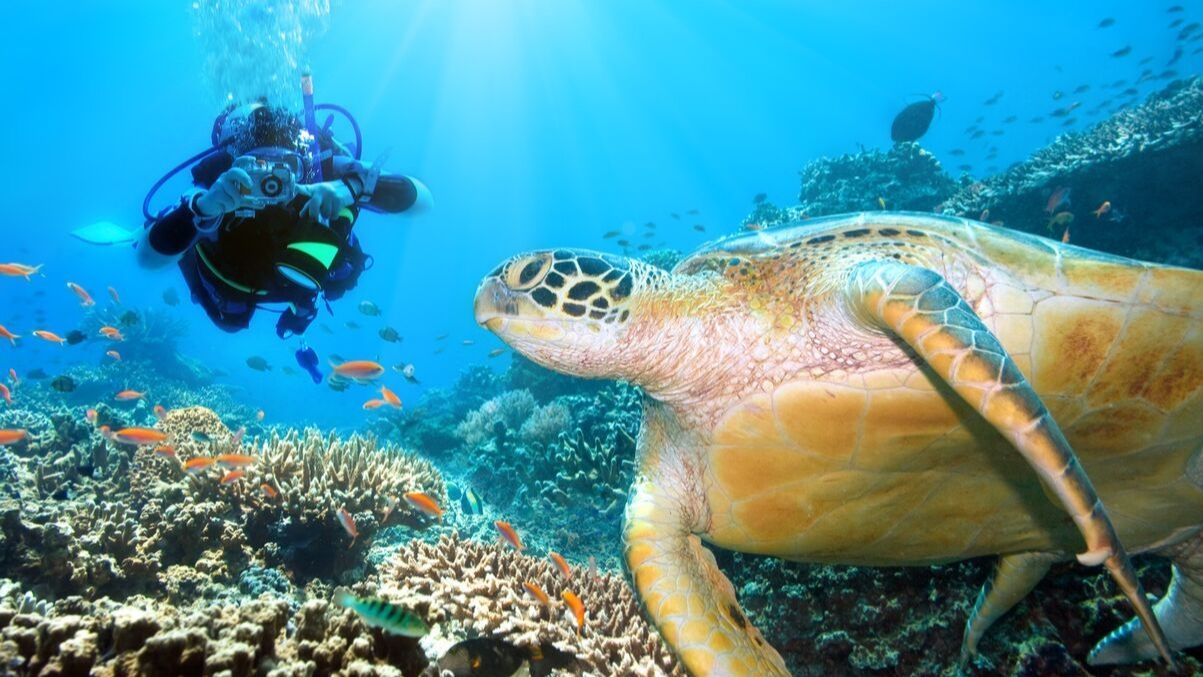
The UNESCO world heritage site tucked away in the Sulu Sea spans almost 1,000 square kilometres and is home to both the Tubbataha and Jessie Beazley Reefs. Its relative isolation means that it can really only be explored by doing a live-aboard dive experience and spending at least a week at sea. You’ll be rewarded for your commitment: the waters here are home to more than 350 species of coral and almost 500 species of fish, including whales, dolphins, tiger sharks, turtles and Napoleon wrasse. The best time to dive is from March to June, ahead of the brutal typhoon season.
Where to stay: It’s only possible to dive here if you stay on a liveaboard boat. One of the most popular is the SY Philippine Siren, a gorgeous 40m wooden vessel, with a seasoned crew and dive team. They also have options for snorkelling, kayaking, and on-shore excursions.
Who to dive with: As liveaboards are the only option it is best to ensure your vessel is industry approved. The Professional Association of Diving Instructors (PADI) has a wider range of recommendations.
Raja Ampat, Indonesia
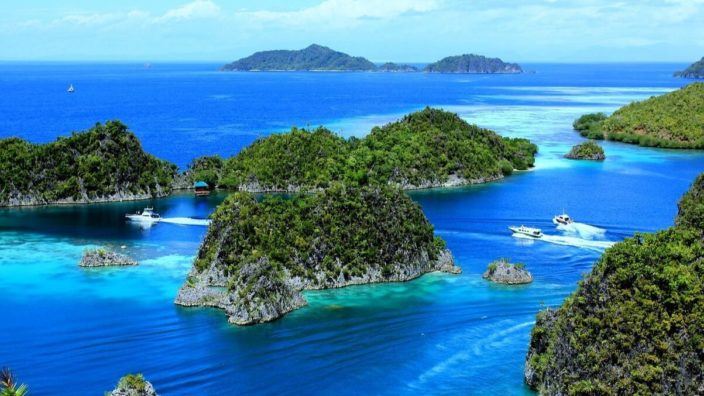
Once a little known part of the Indonesian archipelago, the word is out now about Raja Ampat and tourism numbers are starting to soar. That said it is still possible to explore this remote piece of paradise in relative peace and those that make the effort to reach here are richly rewarded. For now, Raja Ampat’s waters could be the poster child for biodiversity – the vast and vibrant reef walls teem with life. Schools of tuna, manta rays and a plethora of reef sharks populate the waters and every dive still elicits a thrill. It’s possible to visit year-round, though the summer months bring wilder winds and rougher rides. There’s a range of sites but strong currents and technical requirements mean some of the more exposed ones are not suitable for beginners.
Where to stay: A hidden gem is Misool Resort. Created by Marit and Andrew Miners who have transformed an island that once housed a shark-finning camp into an eco-sanctuary and conservation centre. They’ve created a haven for both human and marine life, working with the community to protect the vast environmental riches of the area.
Who to dive with: The affiliated Misool dive centre is highly-recommended and the dives can be done daily, with rest breaks back at the resort. The waters are pristine and there’s plenty of options for snorkellers or land-lovers too.
Mergui Archipelago, Myanmar
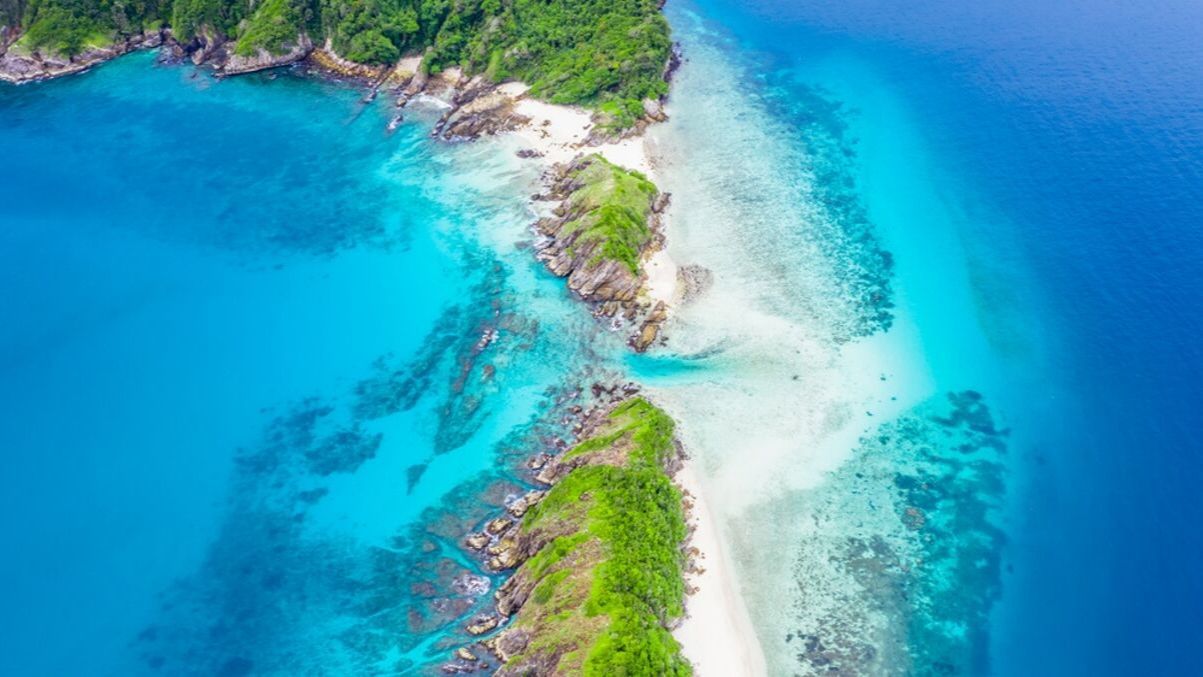
Nestled in the Andaman Sea close to both the Thai border and Myanmar’s southern reaches, the Mergui Archipelago is made up of hundreds of islands spanning more than 12,000 square kilometres. Home to the indigenous Moken people, tourism is only just beginning to come to the area. The diving is intrepid and best suited to seasoned divers because of the remote location. Manta rays, turtles and dugongs are common, while sites like Shark Cave are visited by a wide range of species including bull, reef, and whale sharks.
Where to stay: Awei Pila is a luxury eco-resort actually on one of the islands in the archipelago. Relax in the beautifully designed yurts, swim in the stunning pool, or explore hidden coves and untouched beaches.
Who to dive with: Awei Pila has its own dedicated dive centre which offers PADI courses, while access to some of the region’s most popular sites is an easy boat ride away.
German Channel & Jake’s Seaplane, Palau
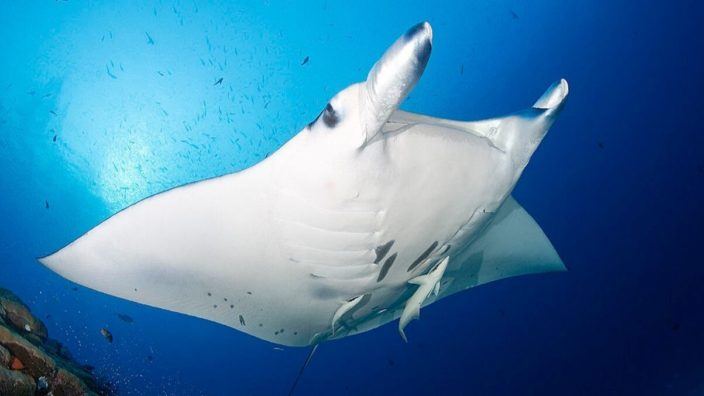
The Germans created this channel in the early 20th century, blasting through rock to create direct access from the lagoons to the open ocean. Today it’s one of Palau’s most popular dive spots in the main because at the mouth of it is a manta ray cleaning station. Divers can marvel as these gentle giants loop around before resting while any parasites are removed by hungry ‘cleaner’ fish. There’s plenty of coral, eels, reef sharks, and eagle rays to spot too. For underwater photography lovers, Jake’s Seaplane, is a must. This remarkably well-preserved Japanese navy wreck sits around 15 metres below the surface. The angle the aircraft sank at means it’s easy for divers to navigate the structure, and also take striking images. There’s plenty of clownfish, triggerfish, coral, and pufferfish around, and occasionally schools of cuttlefish pass by.
Where to stay: Palau Pacific Resort is beloved by divers and families alike. It’s perfectly located in Koror and provides a range of options. The garden and ocean view rooms are ideal for those who will dive daily and want a relaxing space afterwards, while the suites come with a living room and kitchenette that make it a home from home.
Who to dive with: Fish’n’Fins can do both these dives across one morning as they are relatively close to Koror and easily accessible.
SS Coolidge, Espiritu Santu, Vanuatu
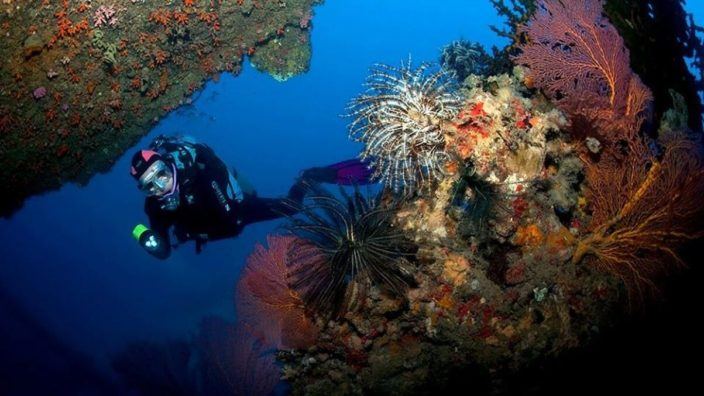
One of the most accessible and interesting wreck dives in the Asia-Pacific, this steamship was once a luxury liner that could host around 1,000 guests. It was used as a troop carrier during World War II and was carrying thousands of soldiers when it sank after hitting two mines. Now it sits beneath the waves, a short distance from the Espiritu Santu shoreline. A vast vessel at 200m in length – there are scores of different dives that can be done for people of varying abilities. While marine life has taken over much of the structure, it’s still possible to spot helmets, weapons, and even parts of vehicles. Exploring the deeper more enclosed parts of the boat should only be attempted by experienced wreck divers and with a reputable dive guide. This adventure can easily be combined with a second dive at Million Dollar Point where military vehicles were dumped creating a surreal underwater junkyard.
Where to stay: Bokissa Island Resort is a great option for those looking for more than just diving. There’s a lovely beach, excellent kayaking options, and easy access to the key dive points.
Who to dive with: Allan Power Dive Tours has been in business for decades and the firm is well respected for its commitment to the local community and knowledge around the dives in the area.
Banda Islands, Indonesia
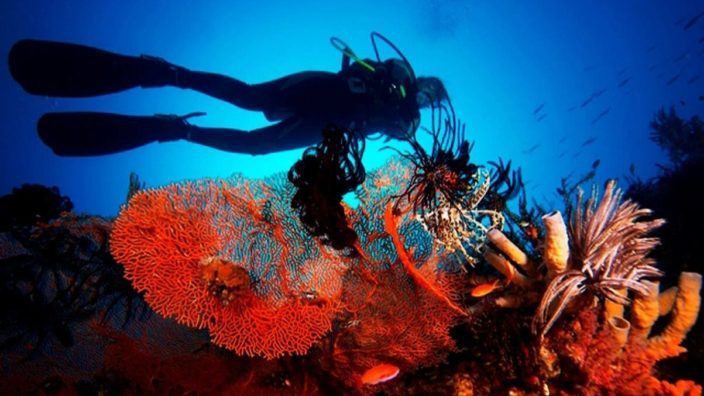
The Banda Islands have captured imaginations for centuries and are the stuff of books, songs, and poetry. Once a famed hub for the spice trade, now the region is also known for its dramatic scenery both above and beyond the surface. The reefs brim with life and there’s a bewildering amount of fish, life here has been protected by its isolatios. Expect to see a multitude of sea snakes, manta rays, and if lucky – schools of hammerhead sharks.
Where to stay: If available the stunning Alila Purnama is a must for travelling these waters in style. The Phinisi ship sleeps ten guests and enables the refined traveller to explore in comfort – there is even a bar and a library on board. Their 12-day dive itinerary captures the best of the breathtaking landscape.
Who to dive with: Liveaboards are the main option here because the islands are so far from Indonesia’s main tourist trail and an ideal way to explore the waters around the 11 islands. This website has a dedicated list across budgets https://www.liveaboard.com/
Andaman Islands, India
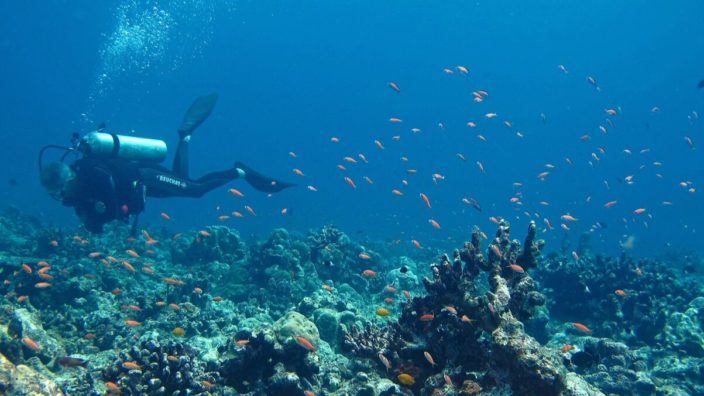
This tropical cluster of 572 islands that sits in the waters between India, Thailand and Myanmar offer a chance to explore almost untouched coral reefs so varied in colour and type that it’s humbling and reassuring to know such places still exist on earth. Manta rays, and turtles are common, but some of the real beauty is in the “macro” diving where guides can explore the tiny, well-camouflaged creatures – including scorpion and leaf fish as well as eels and octopus. Barren Island and Elephant Island are well worth a trip.
Where to stay: Barefoot Scuba offers sweet places to stay, plenty of community knowledge, and have options for snorkel and general activities as well as dives.
Who to dive with: The guys behind Ocean Tribe are local dive celebrities that even have sites named after them while PADI certified Barefoot Scuba is also hugely popular
Coron Bay, Philippines
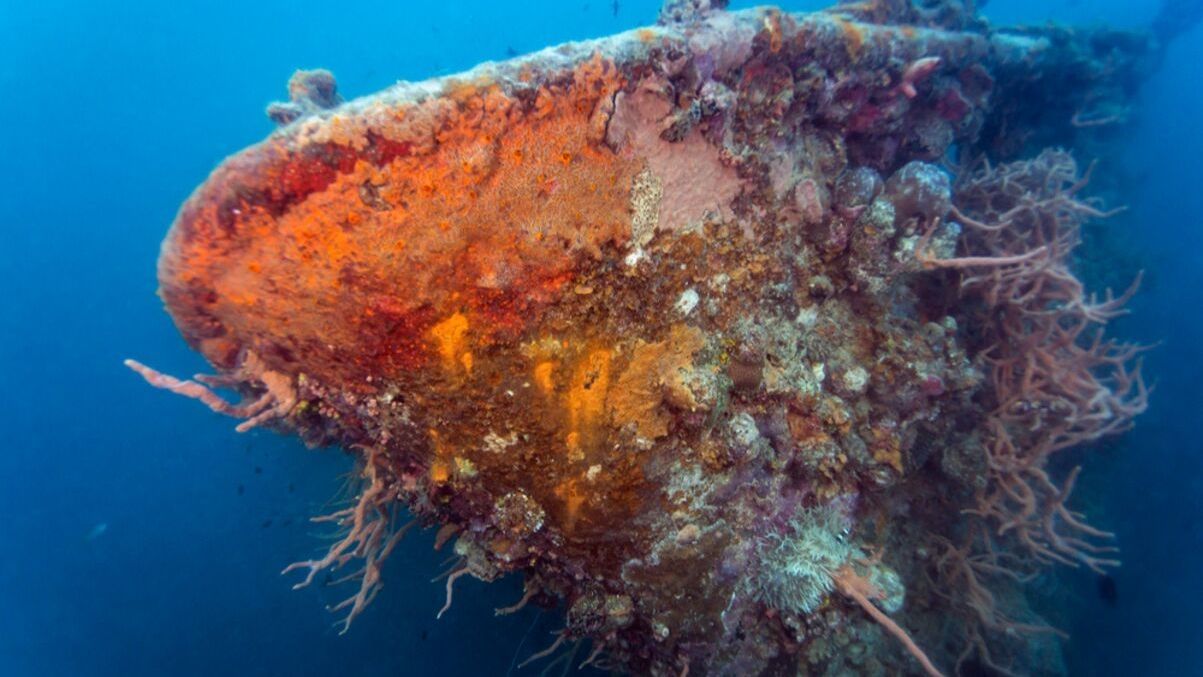
The wrecks here are incredibly well preserved considering the decades and decades spent on the seafloor, plus they are relatively close together which makes adventuring around them much easier! The good thing here is that the exterior of many of the ships are still in great condition and home to thriving marine ecosystems – meaning even novice divers can enjoy a good experience. For veteran wreck divers, there are plenty of boats with accessible and interesting indoor passageways and rooms across multiple levels to investigate.
Where to stay: Sangat Island is a cool eco-resort close to Coron that offers travellers sand, sea, scuba and sailing. Set against a stunning backdrop of white sand, lush hills, and turquoise ocean, this is an excellent choice if not everyone in your party wants to do dive every day or multiple dives a day.
Who to dive with: Neptune Dive Center in Coron is well regarded and offers a range of options and packages to suit differing dive abilities and needs, plus they take safety very seriously and are part of the Divers Alert Network.


